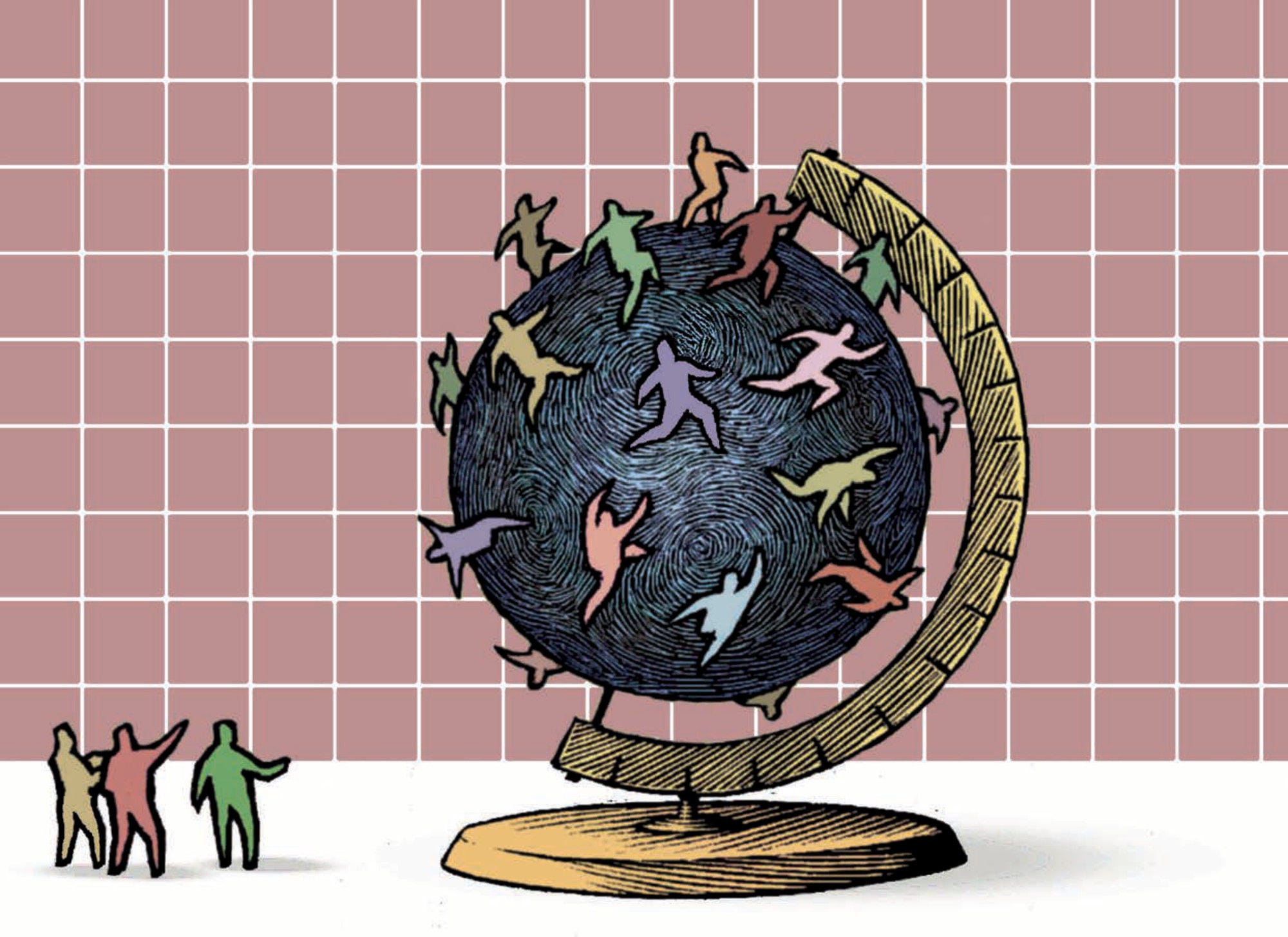The 2018 edition of International Migration Outlook analyses recent developments in migration movements and policies in OECD countries and some non member countries, and looks at the evolution of the labour market outcomes of immigrants in OECD countries, with a focus on the migrants’ job quality and on the sections and occupations in which they are concentrated. It includes two special chapters on the contribution of recent refugee flows to the labour force and on the illegal employment of foreign workers. It also includes country notes and a statistical annex.
International Migration Outlook 2018

Abstract
Executive Summary
Main trends
Preliminary data show that OECD countries received slightly more than 5 million new permanent legal migrants in 2017. This represents the first decline in migration to the area since 2011 (down by around 5%, compared to 2016). This is due, however, to the significant reduction in the number of recognised refugees in 2017 while other migration categories remained stable or increased.
After two years of record-high numbers of asylum applications to OECD countries, there was a significant decline in 2017, with 1.23 million claims. This figure is still well above any other recorded year, prior to 2015. The top three origin countries were Afghanistan, Syria and Iraq. In 2017, the United States received the highest number of asylum applications in the OECD (330 000 applications), followed by Germany (198 000).
Accounting for almost 40% of permanent migrants, family migration (family reunification and formation as well as accompanying family members) remained the most important migration channel to the OECD area. The sharp increase in this category in the period 2015/16 reversed a decline that started in 2010.
For the first time, this year’s Outlook includes a consolidated number for all categories of temporary labour migration to OECD countries. These categories comprise international recruitments of seasonal workers and other temporary foreign workers; EU workers sent by their employers to other EU countries under local contracts (posted workers); and intra-company transferees. In total, more than 4.2 million temporary foreign workers were recorded in the OECD in 2016, which corresponds to an 11% increase compared to the previous year. The main receiving countries for temporary foreign workers are Poland (672 000, mostly from Ukraine) and the United States (660 000, with India as main origin country).
Around 3.3 million international students were enrolled in higher education in an OECD country, 8% up from the previous year. Recent trends in the United States, however, indicate a strong decline in the number of study permits in 2016 (-27%). On average, international students account for 9% of the total number of students enrolled in establishments of higher education in OECD countries in 2015. They represent 14% of all students enrolled in Master’s degree courses and 24% of those enrolled in doctoral courses.
On average across OECD countries, migrants’ employment rate increased by 1 percentage point in 2017, to 67.1%. Their average unemployment rate decreased by 1 percentage point to 9.5%, and the average unemployment gap with their native-born peers narrowed to 3 percentage points in 2017. This development was partly driven by significant improvements in some EU countries.
On the policy side, migration channels for highly-qualified foreigners continue to be refined in many countries, involving adjustment of the selection criteria of permanent programmes and reviewing conditions for temporary programmes. Start-up visas continue to grow in number while investor programmes are under review and see stricter conditions. Eligibility for family reunification is also an area of policy adjustment.
The labour market impact of recent refugees
For European countries as a whole, the estimated relative impact of recent refugee inflows on the working-age population is projected to reach no more than 0.4% by December 2020. In terms of labour force, since participation rates of refugees are typically very low in the early period of their stay in the host country, the magnitude of the aggregate net impact is estimated to be even smaller, at less than 0.25% by December 2020.
In countries with the highest aggregate effects, the impact is likely to be much larger in specific segments of the labour market, notably among young low-educated men. Since this population group is already vulnerable in most host countries, well-targeted measures are needed to provide them with adequate support.
The illegal employment of foreign workers
The illegal employment of foreign workers may result from non-compliance with either migration – or labour – rules. Addressing this issue is therefore both an economic and migration policy objective.
Consequently, OECD countries should seek to improve co‑ordination and coherence between enforcement authorities. They should also raise awareness among both employers and workers and use improved status verification systems as part of measures to prevent the illegal employment of migrant labour. However, when the illegal employment of foreign workers becomes a highly prominent issue or is deemed structural, regularisation programmes may be considered. They need to be designed carefully and accompanied by appropriate changes in legal labour migration channels and stronger enforcement measures. Finally, policies to combat the illegal employment of foreign workers should be conducted not only at national and sector levels, but also internationally.
Main findings
Labour market integration of immigrants
Between 2016 and 2017, the unemployment rate of migrants in the OECD decreased by more than 1 percentage point to 9.5%, and the employment rate increased from 65.7% to 67.1%. The improvement was more marked for foreign-born women.
Specific migrant groups are showing particularly high employment rates. For example, in the European Union, the employment rate of EU migrants is higher than that of natives by 5 percentage points. In the United States, for the first time in recent years, migrants from Mexico and Africa outperformed migrants from Asia by 1 and 3 percentage points, respectively.
Across OECD countries, the creation of integration programmes for newly-arrived migrants and refugees continues, focusing largely on language and skills acquisition. Many countries have also developed measures intended for the most vulnerable, notably unaccompanied minors and children who arrive late to the education system.
Labour market impact of refugees
European countries received 4 million new asylum applications between January 2014 and December 2017, three times as many as during the previous four-year period. During the same period (2014-17), about 1.6 million individuals were granted some form of protection.
For European countries as a whole, the relative impact of recent refugee inflows on the labour force is estimated to be quite small, at less than 0.25% by December 2020. Specific groups (young, low-educated men) in the most affected countries (Austria, Germany, Sweden) are, however, more exposed.
In the absence of any migrant returning to their countries of origin, the total number of rejected asylum seekers could reach 1.2 million by end 2020. The effect on the informal labour market will depend on the level of voluntary returns and the efficiency of enforcement measures.
Illegal employment of foreign workers
Illegal employment of foreign workers is most likely to affect men of a relatively young age. The sectors most concerned by such illegal employment are agriculture, construction, manufacturing and domestic services.
In the same series
Related publications
-
 4 September 2024
4 September 2024 -
 28 June 2024
28 June 2024 -
 11 June 2024
11 June 2024









